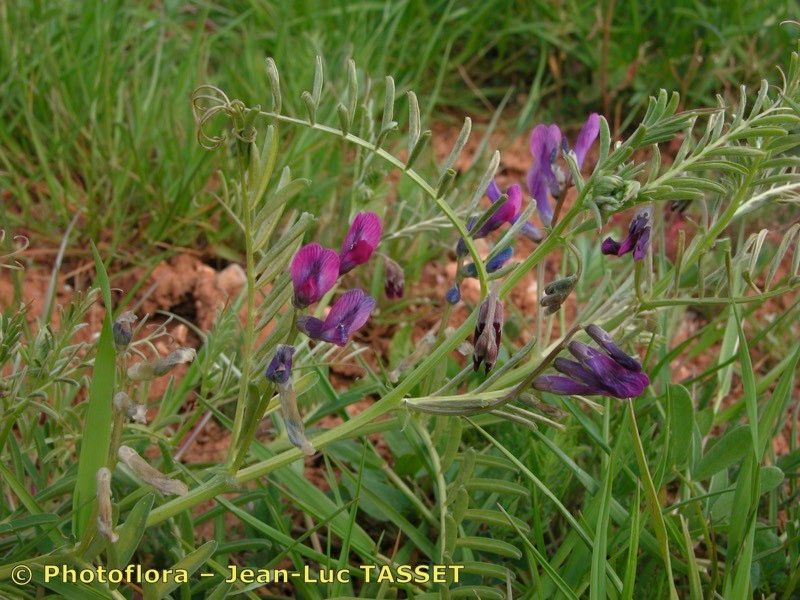Annual Vetch
vicia monantha
Also known as: ["Annual Vetch","One-flowered Vetchling"]
Overview
A slender, annual legume with delicate, pea-like flowers and compound leaves often bearing tendrils.
Benefits & Perks
["wildlife attractant (bees, butterflies, birds)","drought tolerant"]
Botanical Classification
| Phylum: | Magnoliophyta |
| Class: | Magnoliopsida |
| Order: | Fabales |
| Family: | Fabaceae |
| Genus: | Vicia |
| Botanical Name: | Vicia monantha |
Plant Characteristics
Basic Information
- Category: Herbs & Weeds
- Suitable Location: garden bed or container in a sunny to partially shaded area
- Suitable For:
- Is Weed: No
- Allergenicity: low
Environmental Needs
- Climate: {"temperatureRange":"5–30°C"}
- Hardiness: {"zones":"6–9"}
- Misting: rarely required
- Drainage: Fast-draining to prevent waterlogging.
- Soil Type: Well-draining loamy soil with added organic matter.
Maintenance Level
- Maintenance Level: low
- Toughness Level: moderate
- Pruning Frequency: As needed, typically after flowering or in early spring.
- Pruning Intensity: Light to moderate; avoid heavy pruning unless necessary.
Care Details
Ideal Sunlight Coverage:
Full sun (6–8 hours/day); tolerates partial shade in hot climates.
Sunlight Tolerance Tips:
Acclimate gradually to intense sunlight; protect from harsh midday sun; adjust placement based on seasonal light intensity.
Care Requirements
Care Difficulty
easymoderate
Sunlight
full sun to partial shade
Rotate plant for even growth; use sheer curtains in intense sun; avoid direct afternoon sun in summer.
Watering
every 7–10 days during active growth, reduce in winter
Water thoroughly but infrequently; ensure good drainage; avoid wetting foliage.
Soil
well-draining, loamy soil with moderate organic matter
pH: Slightly acidic to neutral (pH 6.0–7.0).
Use a mix of potting soil and perlite; avoid heavy clay soils; ensure pots have drainage holes.
Temperature
Prefers cool to moderate temperatures (60–75°F); tolerates light frost but not prolonged cold.
Avoid sudden temperature changes; protect from frost; ensure good air circulation.
Fertilizing
every 4–6 weeks during growing season
Apply fertilizer after watering; flush soil occasionally to prevent salt buildup; stop fertilizing in dormant periods.
Propagation
Methods
Seed propagation is most common; stem cuttings can also be used.
Step-by-Step Propagation Guide
- Prepare medium.
- Sow seeds or take cuttings.
- Maintain moisture.
- Provide warmth and light.
Best Time: Spring or early summer when the plant is actively growing.
Environment
Warm (70–75°F), humid environment with indirect light.
Medium
Well-draining seed starting mix or cactus mix with perlite.
Hormone
Not necessary for seeds; rooting hormone can aid stem cuttings.
Timeline
Seeds germinate in 1–3 weeks; cuttings root in 3–6 weeks.
Tools Needed
Seed trays, rooting hormone, misting spray bottle, heating mat.
Quick Tips
Keep soil consistently moist; provide bottom heat for faster germination; use clean tools to prevent disease.
Pruning & Repotting
Pruning Guide
Method
Pinch back tips or cut just above a leaf node to encourage branching.
Pruning Plan
Light pruning to maintain shape and remove dead or damaged growth; encourage bushier growth.
Tools
Pruning shears, clean scissors, gloves.
Checklist
Sterilize tools; prune dead or diseased parts; make clean cuts; dispose of clippings.
Repotting Guide
Best Season
Early spring before new growth begins.
Pot Size
Choose a pot 1–2 inches larger in diameter than the current one.
Method
Remove plant gently; trim roots if necessary; place in new pot with fresh soil; water lightly.
Suggestions
Repot every 2–3 years or when roots fill the pot; beneficial for growth and soil health.
Checklist
Prepare new pot; gently remove plant; inspect roots; add fresh soil; water lightly.
Advanced Care Tips
Watering Mastery
Watering Checklist
Check soil moisture; water deeply; ensure drainage; avoid overwatering.
How to Apply Water Properly
Water at the base of the plant, ensuring moisture reaches the root zone; allow excess water to drain away; water in the morning to reduce evaporation.
Watering Schedule Tips
Water deeply once the top inch of soil is dry; reduce frequency in winter to prevent root rot.
Soil Improvement
Add perlite or sand for drainage; incorporate compost for fertility; ensure good aeration.
Temperature Stress Management
Signs of Temperature Issues
Wilting, yellowing leaves, or stunted growth in extreme heat or cold.
Cold Stress
Slows growth, may cause leaf drop, or dieback in severe cold.
Solution: Provide frost protection in winter; avoid placing near drafty windows or doors.
Hot Stress
Leaves may wilt, scorch, or drop in excessive heat.
Solution: Provide shade during peak heat; increase humidity; water more frequently but avoid waterlogging.
Fertilizing Guide
Fertilizing Checklist
Check growing season; dilute fertilizer; apply to moist soil; avoid contact with roots.
Fertilizing Method
Use balanced liquid fertilizer diluted to half strength every 4–6 weeks during growing season; avoid fertilizing in winter.
Common Problems & Solutions
Toxicity Warning
Cats
Slightly ToxicCats that consume Vicia monantha seeds may experience mild gastrointestinal irritation. The lectins and other compounds in the seeds can cause digestive disturbances and discomfort.
⚠️ Symptoms:
🌿 Toxic Parts:
⚡ Toxic If:
if eaten
Dogs
Slightly ToxicIngestion of Vicia monantha seeds by dogs may lead to mild gastrointestinal upset due to the presence of lectins and other antinutritional compounds. These substances can disrupt normal digestive processes.
⚠️ Symptoms:
🌿 Toxic Parts:
⚡ Toxic If:
if eaten
Humans
Slightly ToxicVicia monantha seeds contain lectins and other compounds that can cause mild gastrointestinal distress if ingested in significant quantities. These compounds interfere with nutrient absorption and may lead to digestive discomfort.
⚠️ Symptoms:
🌿 Toxic Parts:
⚡ Toxic If:
if eaten
Frequently Asked Questions
Q: Is Vicia monantha toxic to pets?
A: It is mildly toxic to dogs and cats.
Q: Does Vicia monantha attract wildlife?
A: Yes, it attracts bees and butterflies.
Q: Is Vicia monantha difficult to grow?
A: No, it is easy to grow with low maintenance requirements.
Quick Reference
| Family: | Fabaceae |
| Care: | easy |
| Light: | full sun to partial shade |
| Water: | every 7–10 days during activ |
Get Expert Care Tips
Download the Plantious app for personalized care reminders and plant identification!
Google Play App Store








